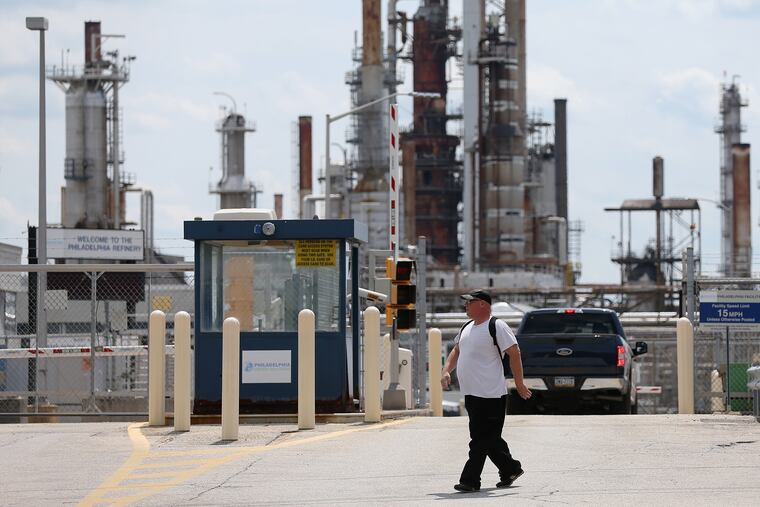Cleaning up the PES refinery site should happen as soon as possible | Editorial
Generations of neighborhood residents, a majority of them Black or brown, have lived with toxic emissions as high as 21 times the federal limit.

In late June, the sale of the former Philadelphia Energy Solutions refinery to Hilco Redevelopment Partners was finalized, after the buyer wrangled a $26.5 million discount off the original $252 million price. Even before the deal was officially done, the new corporate owner began introducing itself to an understandably skeptical audience: its new neighbors. Hilco CEO Roberto Perez sent several hundred emails to community residents, as well as grassroots organizations, union representatives, city officials, and others with a stake in the future of the 1,300-acre site.
Hilco officials say community outreach and marketing professionals are already at work, and that public meetings will be scheduled. The sooner the better, in our view — because good intentions and savvy marketing are fine, but actions to remediate contamination, protect public health, and promote economic opportunities are more important. The city should use its considerable leverage to make sure promises made are promises kept throughout the expected 10-year duration of the project.
Chicago-based Hilco has not released detailed plans, but officials say the company intends to replace the damaged, outmoded refinery with a state-of-the-art, light industrial park focused on warehousing and logistics. While the tank farm on the west side of the Schuylkill is expected to remain and may be reused, the actual refining of petroleum on the property is history. PES ceased operations, and 1,000 workers lost their jobs, after an explosion and fire on June 21, 2019; Hilco bought the property out of bankruptcy on June 26 of this year. The soil and groundwater on the site are deeply contaminated with cancer-causing benzene, as well as lead and other toxins remaining from a century and a half of petroleum-related uses.
The former refinery property nonetheless is a prime economic opportunity; it is larger than Center City and has 100 more acres than the nearby Navy Yard, which has evolved from a moribund military installation to a real estate success story over the last 20 years. Connecting Hilco’s new industrial park to the existing street grid and to SEPTA’s bus network will be essential, as will making its borders with residential areas more attractive. But a century or more of spills, leaks, and emissions have rendered the landscape unsuitable for residential development or active recreational space.
Environmental remediation was a top concern among the more than 200 people, including residents of refinery-area neighborhoods, who participated in a “visioning” project convened by the Clean Air Council and Drexel University’s Lindy Institute for Urban Innovation. A deeply researched report by the city’s Refinery Advisory Group, released late last year, also prioritized cleanup.
Generations of neighborhood residents, a majority of them Black or brown, have lived with toxic emissions as high as 21 times the federal limit. A thorough cleanup to ensure that legacy pollution doesn’t continue to burden the neighborhood, or the region, will reassure residents about the company’s good intentions.
If Hilco is serious about being a “good corporate citizen” and a good neighbor, as it says it is in newspaper advertisements, then it needs to make clear how the neighborhoods where it just became the major landowner can be heard, and heeded, as the transformation begins.